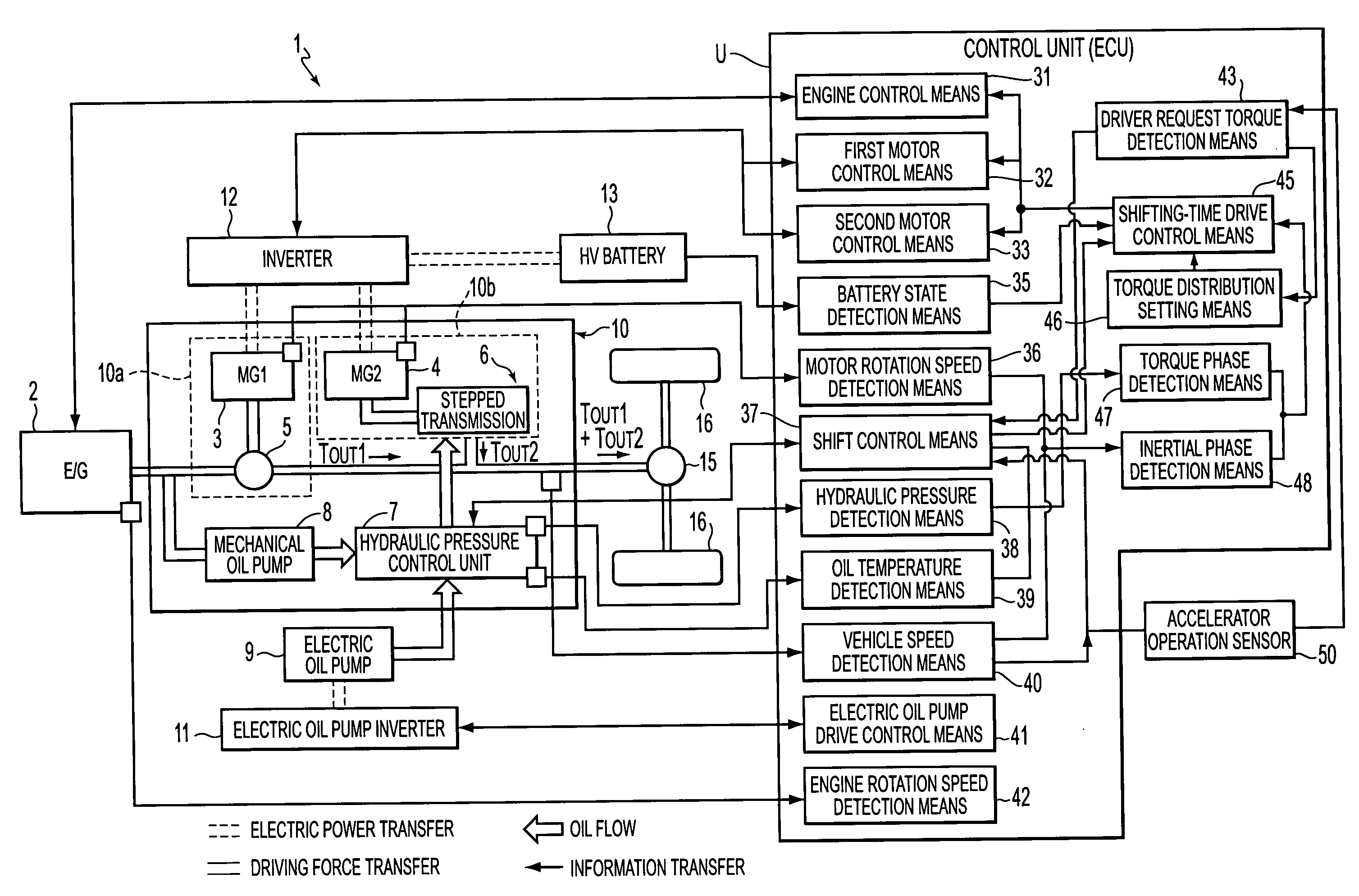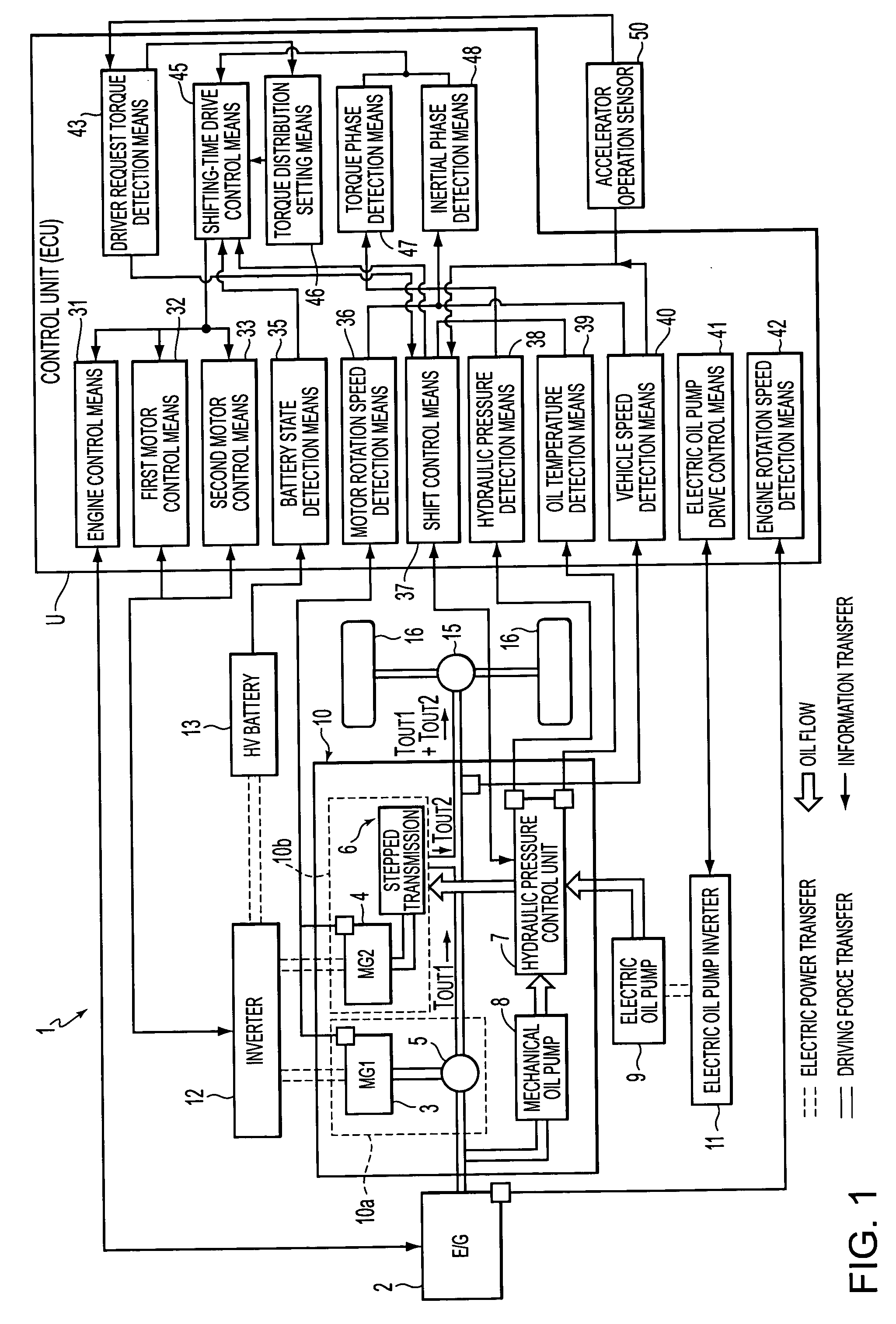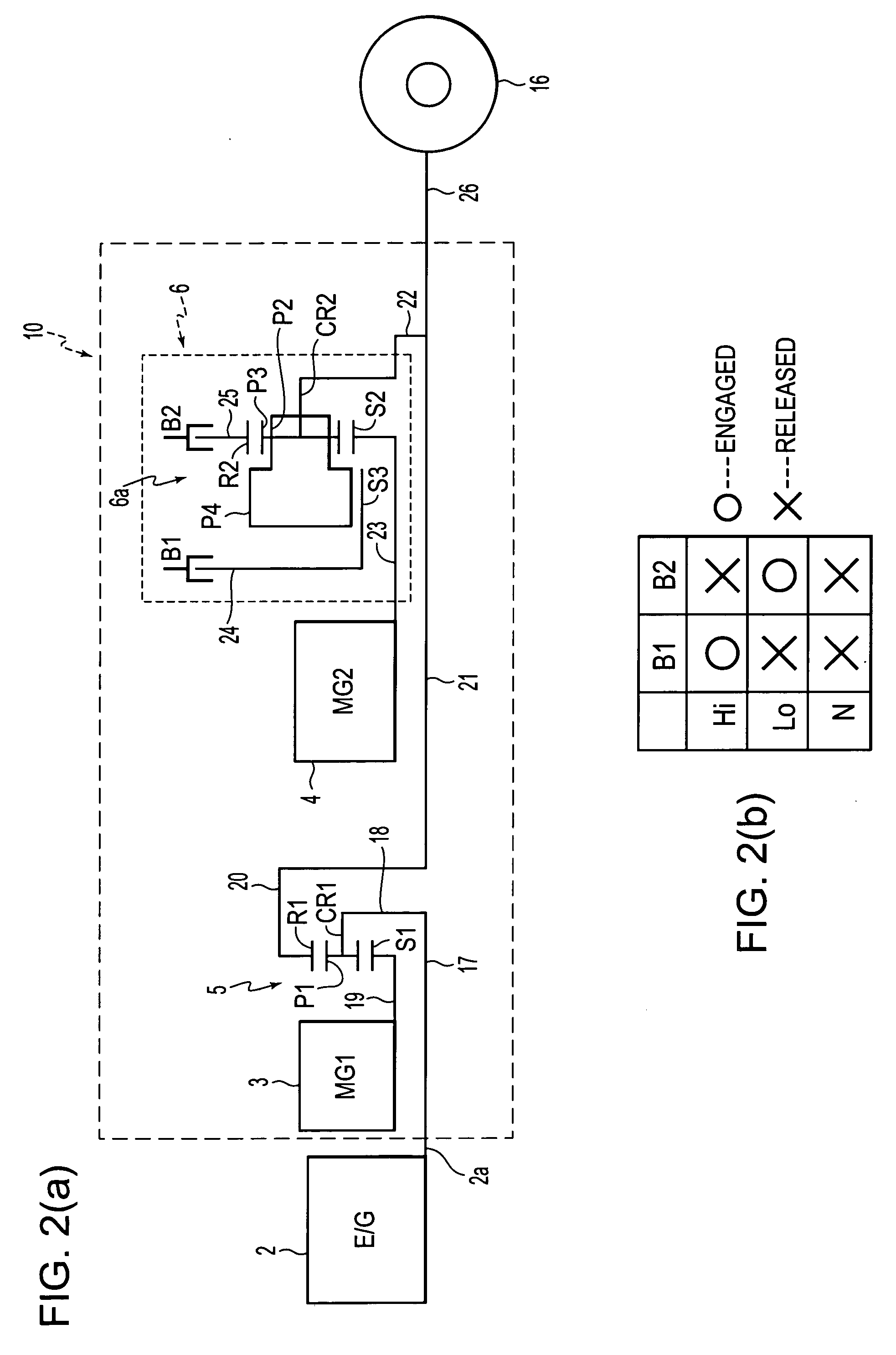Control apparatus of hybrid vehicle
a control apparatus and hybrid technology, applied in the direction of machines/engines, process and machine control, instruments, etc., can solve the problems of discomfort of drivers, stepwise change between, temporary torque fluctuation, etc., and achieve the effect of improving fuel economy and optimizing fuel economy
- Summary
- Abstract
- Description
- Claims
- Application Information
AI Technical Summary
Benefits of technology
Problems solved by technology
Method used
Image
Examples
Embodiment Construction
[0027] An exemplary embodiment of the invention will be described hereinafter with reference to FIGS. 1 to 6.
[0028] Firstly, an example of the hybrid vehicle to which the invention is applicable will be described with reference to FIGS. 1, 2A and 2B. As shown in FIG. 1, the hybrid vehicle is a two-motor split type hybrid vehicle. The hybrid vehicle includes an internal combustion engine (E / G) 2 capable of outputting a driving force, a drive unit 10 connected to the engine 2, and driving wheels (rear wheels) 16 connected to the drive unit 10 via a differential device 15.
[0029] The drive unit 10 includes a first drive unit 10a and a second drive unit 10b for outputting the driving force to the driving wheels 16. The first drive unit 10a includes a power distribution planetary gear 5 connected to the engine 2 via a damper device or the like (not shown), and a first electric motor (MG1) 3 connected to the power distribution planetary gear 5. The first drive unit 10a is connected to a ...
PUM
 Login to View More
Login to View More Abstract
Description
Claims
Application Information
 Login to View More
Login to View More - R&D
- Intellectual Property
- Life Sciences
- Materials
- Tech Scout
- Unparalleled Data Quality
- Higher Quality Content
- 60% Fewer Hallucinations
Browse by: Latest US Patents, China's latest patents, Technical Efficacy Thesaurus, Application Domain, Technology Topic, Popular Technical Reports.
© 2025 PatSnap. All rights reserved.Legal|Privacy policy|Modern Slavery Act Transparency Statement|Sitemap|About US| Contact US: help@patsnap.com



